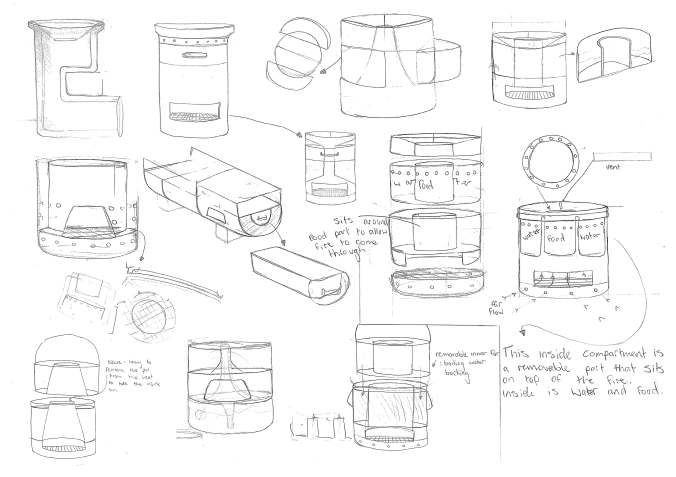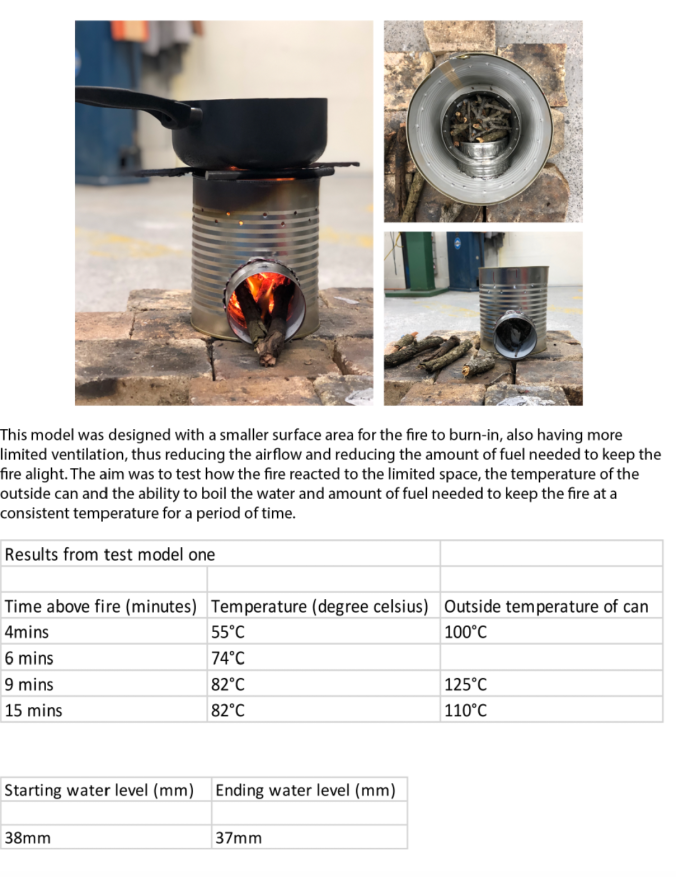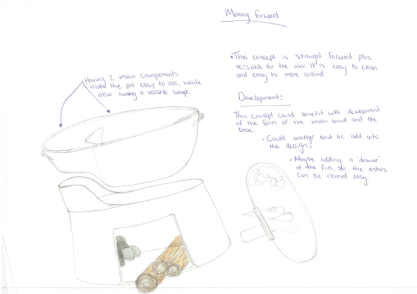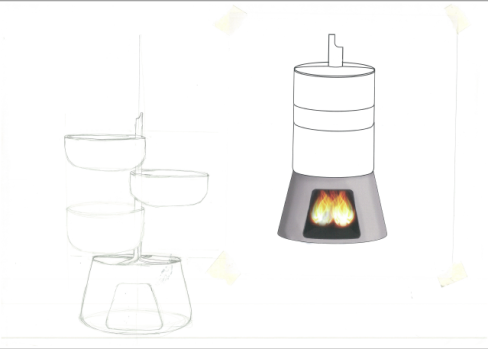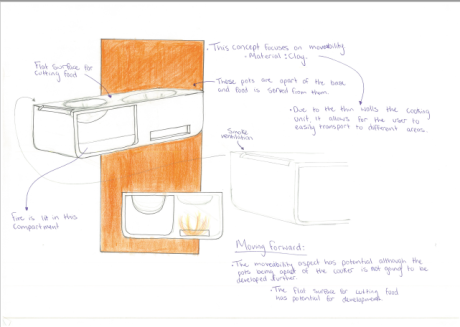Cooking and boiling water container test one:
For my third prototype I wanted to test how cooking potato inside an enclosed space without stirring them would work. I also wanted to test to see how hot the water would get inside of an enclosed space. Both cans can ventilation holes.
Potato:
13 minutes the potato can is starting to steam and you can smell the potatoes cooking. You can hear the oil from the potatoes sizzling. The potato cans not been shaken or moved so what ever is cooked on the bottom might be different to the top
- The potato at the bottom of the can burnt due to being extremally close in the fire. As where the potato at the top was cooked through but didn’t burn.
- The potato was 85 degrees Celsius at the end of the 16 minutes.
Water:
13 minutes in the water can has condensation on the outside.
The water temp at the end of 16 minutes was 90 degrees Celsius.
The starting water level height was 85mm
The end water level height was: 80mm
5mm decrees in the water height.
Moving forward.
The reason the potato burnt at the bottom of the can and the potato on the top of the can was cooked through without any burning was becuase the potato was sitting directly on top of the fire with no space in between. Moving forward I’m going to develop my current concept and add a ‘layer’ of protection in between the fire and the food to stop the burning issue.
I want to continue with the development of baking foods within an enclosed space.





